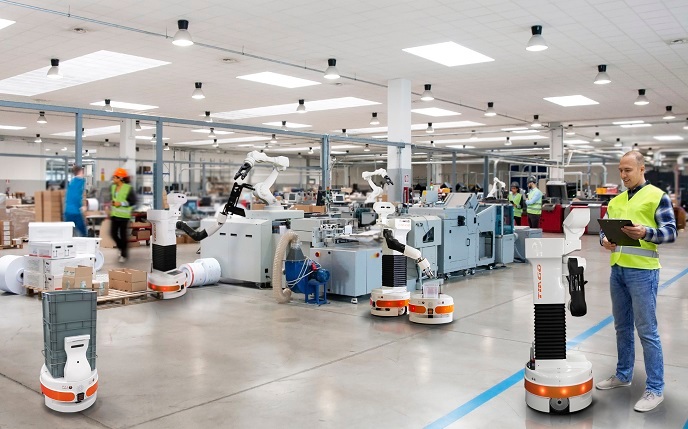Faster, more efficient industrial robots with real-time motion planning
Conjure up the image of smart factories that deploy intelligent robots that can learn, think and act like humans. This inevitably entails high levels of robotic automation: robots that can perform tasks that are not so meticulously pre-planned, take decentralised decisions and perform real-time motion planning. This was the vision of the Co4Robots project: Factories of the Future with multiple robots and humans working together safely and productively on common tasks, such as item pickup, transport and delivery. The main challenge Co4Robots addressed was the efficient coordination of robots with different actuation, manipulation and perception capabilities.
Centralised versus decentralised control and coordination
Robots moving as a cohesive unit, while also splitting tasks, is difficult to achieve in real time. The supervision and coordination of this heterogeneous system call for a decentralised framework integrating high-level task planning, low-level motion control and robust, real-time robot perception. Robotic team coordination typically relies on offline, centralised planning. The related tasks are prepared in advance and are performed in a predefined manner. “Assigned paths and actions cannot help unlock the vast potential multi-robot systems can show when carrying out operations in a dynamic environment. Any sudden change in the environment or the type of assigned tasks would require higher levels of coordination and would thus cause the system to halt and ask for human intervention,” explains Dimos Dimarogonas, Co4Robots coordinator. Co4Robots addressed the need for real-time, automated task (re)-planning in the absence of a central ordering influence of a centralised system. “Our main focus was on improving collaboration between different types of interacting robots and between robots and humans. Examples include force-controlled transport, human gesture recognition, and dynamic task decomposition and allocation,” adds Dimarogonas.
Project milestones
Researchers demonstrated three scenarios to test interactions between different agents in a changing environment. The first scenario involved a human and a robot collaborating on transporting a load. The human let the robot know what it should be doing using a hand gesture. The second scenario involved a fixed and a mobile robotic entity interacting with each other and with humans, again for grasping an object. In the third scenario, multiple robots and humans worked in a shared space. The tasks included the periodic check of assembly stations for finished products, product delivery to the next production station, and monitoring of the assembly station for supply requests. To realise these scenarios, researchers pioneered, amongst others: the development of distributed methodologies for real-time motion control of multi-agent systems in a dynamic environment; control schemes for collaborative load transportation; perception algorithms; and object or agent detection and tracking. The new decentralised approach for real-time motion planning was based on linear temporal logic (LTL) and metric interval temporal logic – a fragment of LTL. LTL is just like writing down the commands needed to complete a certain task. This automated planning entails three steps: first, efficient decentralised methods translate each agent’s motion capabilities and dynamic interactions into a discrete representation; second, the initial task is decomposed into local tasks; and third, a high-level task plan is obtained. Another project highlight was the development of software architecture that supports human-robot collaboration as well as adaptation and coordination of single- and multi-robot systems in a decentralised fashion. The Co4Robots results are also presented in more than 80 publications.
Keywords
Co4Robots, robots, coordination, decentralised, real-time motion planning, Factories of the Future, linear temporal logic



